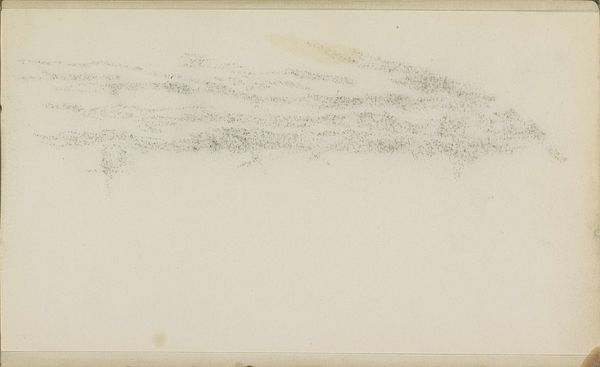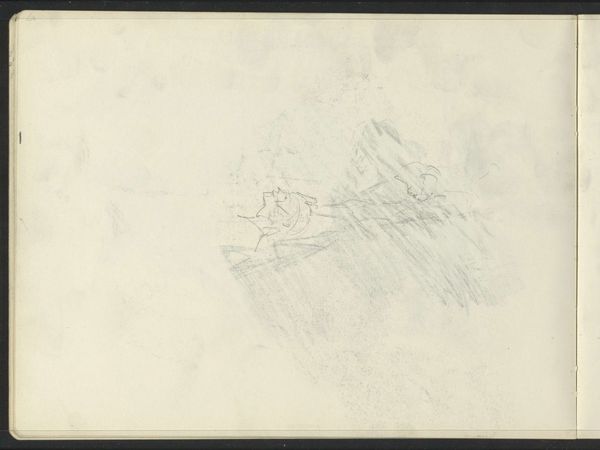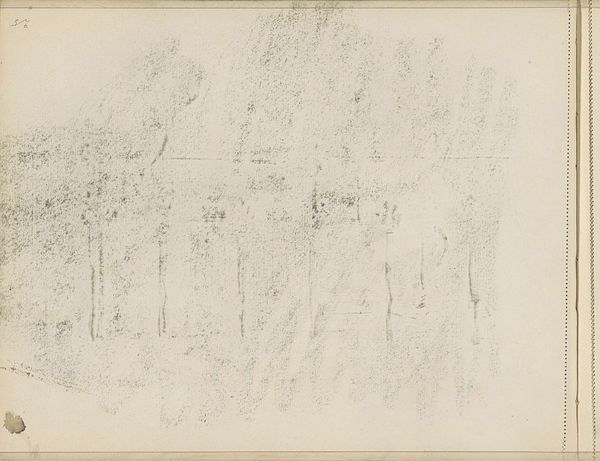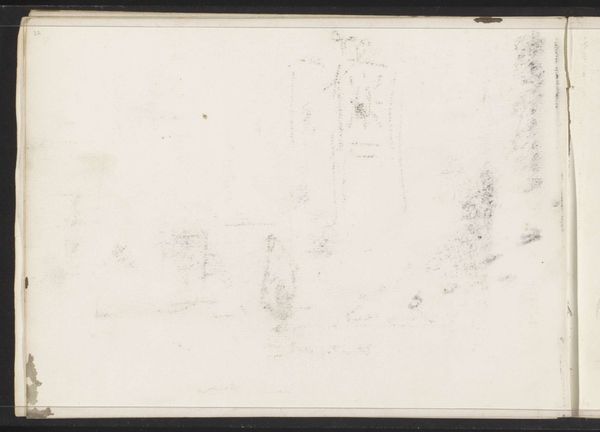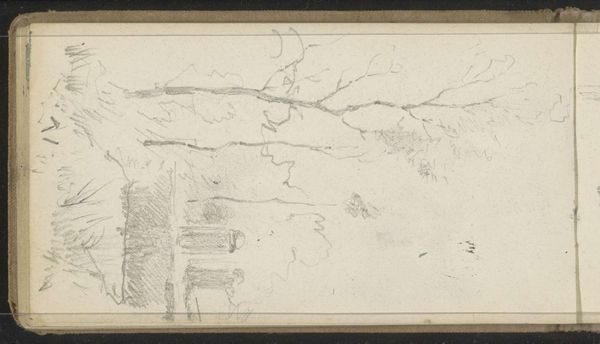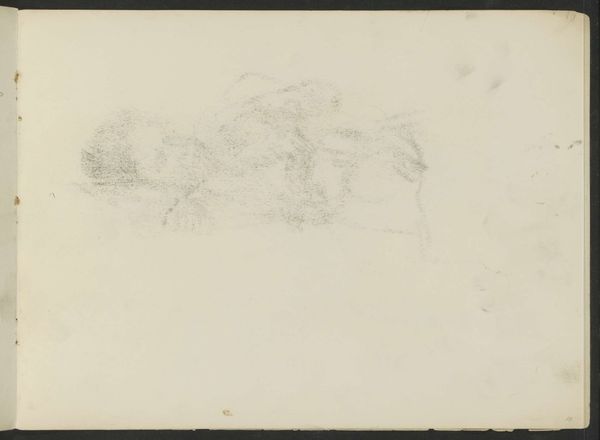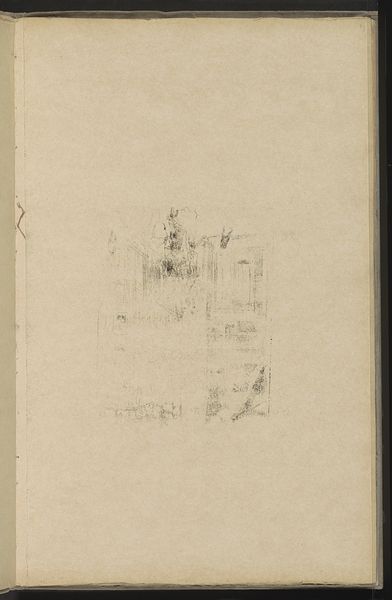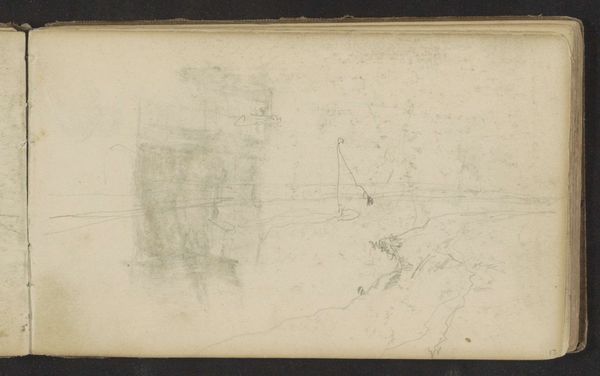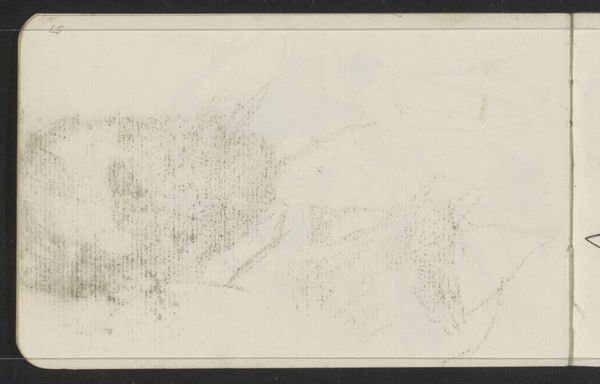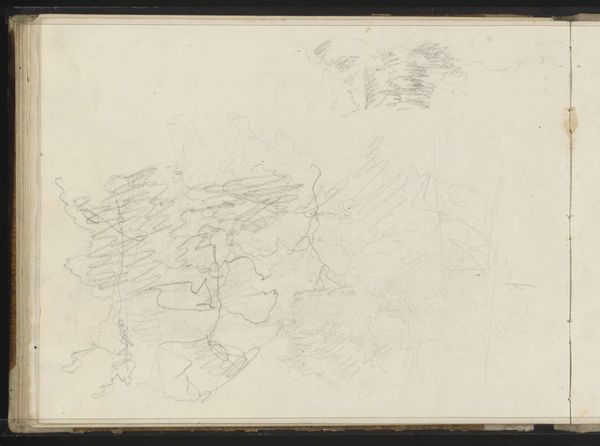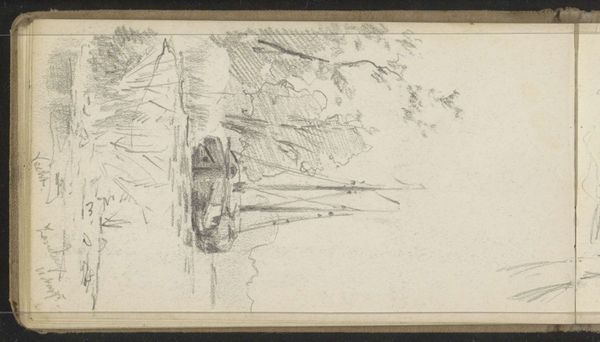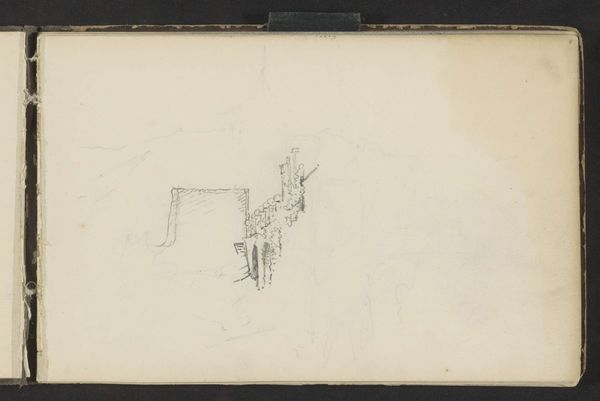
drawing, paper, pencil
#
drawing
#
pencil sketch
#
landscape
#
paper
#
pencil
#
realism
Copyright: Rijks Museum: Open Domain
Editor: This is "Studie," a pencil drawing on paper by Jozef Israëls, made sometime between 1834 and 1911. The image is faint, almost ghostly. It seems to show some sort of structure, perhaps buildings, against a very vague landscape. How do you interpret this work? Curator: Well, at first glance, it does appear quite simple. But I think it's important to consider Israëls’ broader artistic project. He was deeply concerned with the lives of the working class, particularly the Jewish community in the Netherlands. Does this sketch resonate with those concerns? Is there something about the bareness that reflects a stark reality? Editor: I hadn’t thought about it that way. It just seemed unfinished. So, you see the emptiness as representative of a larger social or political issue? Curator: Precisely. Consider the date, between 1834 and 1911. This was a time of massive social upheaval, industrialization, and poverty. Could this sparseness speak to a kind of precarity, a life stripped down to its bare essentials? It asks us to look at who gets represented in art, and how. Who *doesn't* get the glamorous portrait? Whose stories are left untold? Editor: That’s a really powerful point. Seeing it as a deliberate artistic choice, related to those social realities, gives it a completely different dimension. It's more than just a study, it’s a statement, however subtle. Curator: Exactly. Israëls forces us to confront those uncomfortable silences, to consider the narratives that are often erased from the dominant historical record. And he makes us question the ethics of representation itself. Editor: I see it now. Looking at this 'Study' through that lens, I can appreciate the intentionality in its supposed lack of finish. It encourages me to question what and *who* defines art. Curator: Yes. That is a way this art stays connected with current times, which question who is included in historical canons and which images are worth exhibiting in a museum.
Comments
No comments
Be the first to comment and join the conversation on the ultimate creative platform.
